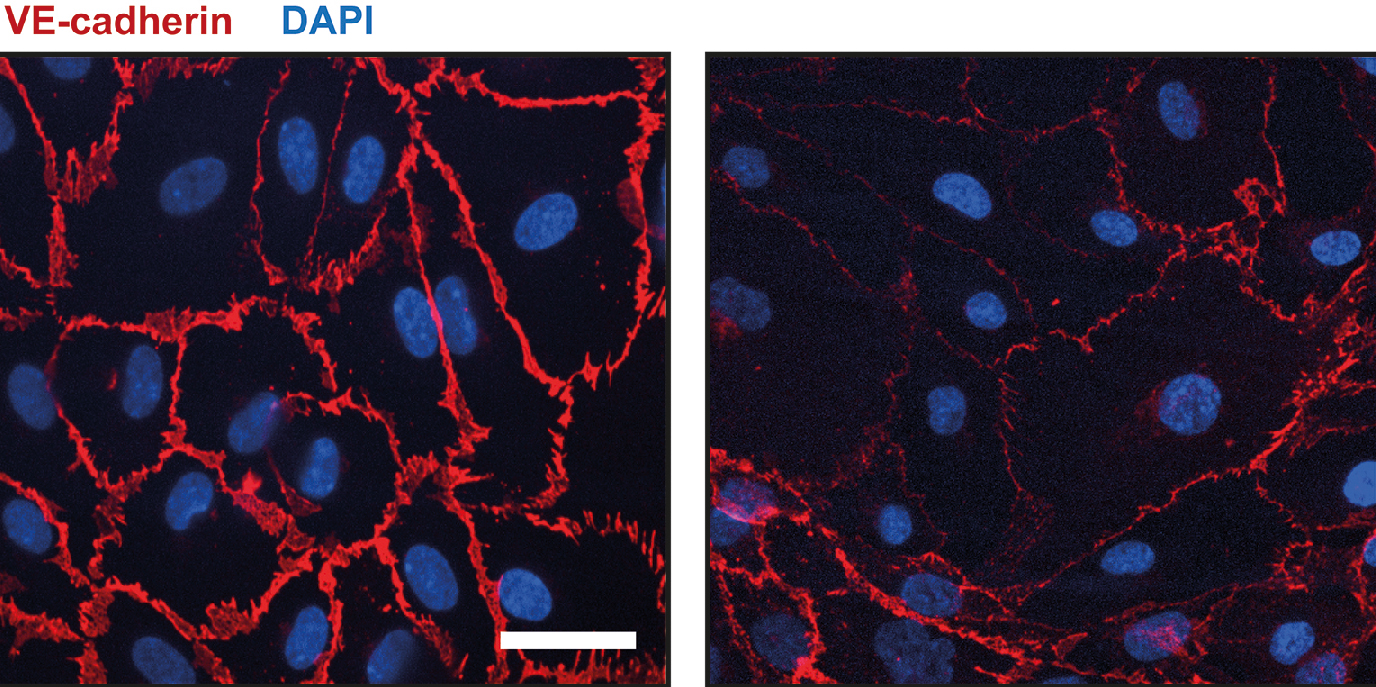Role of Cellular Senescence in Endothelial Dysfunction
Cellular senescence is a biological process characterized by irreversible proliferative arrest, resistance to apoptosis, presence of senescence-associated secretory phenotype (SASP), and morphological changes [1]. Several studies in genetically modified animal models have shown that increased cellular senescence can lead to dysfunction of multiple organs, reduced physical activity and early mortality [2]. Accumulation of senescent cells is usually found in the tissues of elderly people, suggesting that cellular senescence is a key mechanism that triggers or contribute to age-related pathologies, [3].

In our work we develop in vitro senescence models able to recapitulate the pathophysiology of endothelial monolayers. We investigate how the presence of senescent cells aggravates the endothelial dysfunction. Furthermore, we investigate how targeting specific intracellular pathways activated in senescent cells promote a rescue of the endothelial monolayers.
Project Lead
Dr. Francesca Pramotton
[1] Hernandez-Segura et al., Hallmarks of Cellular Senescence, Trends in Cell Biology, 2018, 28,6,436-453. external page https://doi.org/10.1016/j.tcb.2018.02.001
[2] Kirkland et al., Cellular Senescence: a translational perspective. EBioMEdicine, 2017; 21:21-28. external page 10.1016/j.ebiom.2017.04.013
[3] Munoz-Espin et al., Cellular senescence: from physiology to pathology, Nat Rev Mol Cell Biol, 2014, 15 (7):482-96. doi: external page 10.1038/nrm3823